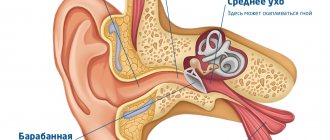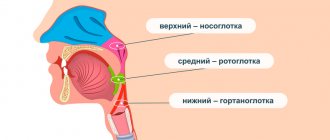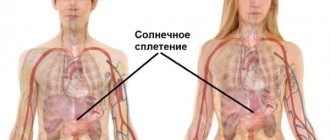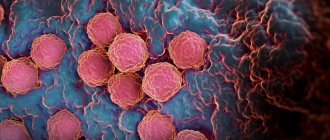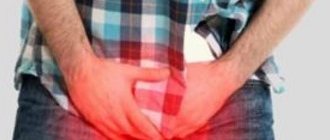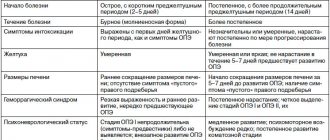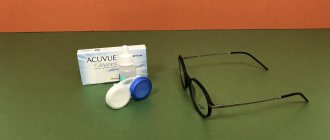Headache is one of the most common symptoms. It can be localized in the frontal, occipital, temporal regions, or be mixed. Many people do not attach much importance to this condition, but it can signal disturbances in the functioning of the cardiovascular and endocrine systems, spine, and brain.
Pain in the temples can occur both in the morning and at any other time and last from 10-15 minutes to several days. In order to understand the reason for its appearance, you should undergo diagnostics. Early detection of pathologies allows you to quickly deal with them and avoid negative consequences.
Causes of pain in the temples
A headache localized in the temporal region can be one-time and associated with negative environmental conditions, colds, lack of sleep or the menstrual cycle. In this case, it does not pose any particular danger and does not require treatment. Recurrent pain in the temples occurs due to disorders in the body. The reasons for its appearance include:
- changes in hormonal levels;
- decrease or increase in intracranial pressure;
- migraine;
- temporal arteritis (inflammation of the arterial walls);
- disorders of nerve channels;
- vegetative-vascular dystonia;
- atherosclerosis.
This unpleasant symptom can also serve as a signal about the development of an oncological process in the brain. In addition, it occurs against the background of circulatory disorders associated with diseases of the cervical spine.
Types of pain in the temples
Pain can affect one temple or two at the same time. A “wandering” character is also often observed, in which pain from one temple “passes” to another.
The nature of the pain may be:
- bakers;
- burning;
- pressing;
- piercing;
- blunt or sharp;
- paroxysmal or constant;
- pulsating.
Each patient's description of pain is unique and individual in nature. Particularly “vivid” characteristics of pain manifestations are given by patients with neurotic disorders.
Accurate diagnosis of the causes of pain
To get rid of this unpleasant manifestation, it is necessary to undergo diagnostics and receive appropriate treatment. Despite the fact that modern pharmaceutical companies offer many drugs that have an analgesic effect, stopping a symptom does not mean eliminating the root cause. To forget about pain in your temples forever, you need to understand why it arose. To do this you need to undergo an examination.
MRI of the brain and blood vessels is the most informative and safe diagnostic method used to detect the cause of headaches. Compared to radiography it:
- does not have a negative effect on the body due to the absence of radiation exposure;
- makes it possible to see an accurate picture;
- Can be used on pregnant women, children and elderly patients.
The accuracy of magnetic resonance imaging at MedSeven when examining the brain and blood vessels is about 95%. The duration of diagnosis of pain in the temples is only 15-30 minutes.
Diagnosis and treatment of temporal headaches
Treatment of pain in the temples should begin with identifying the causes of their occurrence, and it should only be prescribed by a specialist.
To do this, the doctor does:
- interviewing the patient, measuring blood pressure, and, if necessary, also determining intracranial and intraocular pressure;
- general and neurological examination;
- ordering the necessary laboratory tests;
- X-ray diagnostics;
- angiography (study of the anatomical state and functions of the vessels of the head);
- MRI of the head.
After establishing the diagnosis and finding the cause of the pain, the necessary treatment is prescribed. The main factor in eliminating temporal headaches is treatment of the underlying disease. Treatment tactics can be conservative, surgical or combined. The doctor chooses the method of influencing the patient. Treatment of headaches in the temples and eyes should be preceded by a mandatory consultation with an ophthalmologist.
Most often used:
- in the presence of hypertension – normalization of the patient’s blood pressure with medications;
- specific drug correction for hormonal disorders;
- pain relief, especially in the first stages of treatment, which require time for the necessary differential diagnosis;
- for migraines, the doctor selects drugs from the group of triptans and ergotamines;
- non-steroidal anti-inflammatory drugs. Effective for pain caused by inflammatory diseases, as well as neurological diseases;
- in case of poisoning - detoxification treatment.
In cases of a neuropsychic nature, headaches in the temples and back of the head can be treated with psychotherapy. Spinal problems that cause temporal pain are effectively eliminated using manual therapy techniques, specific types of massage (acupressure, collar area, impact on points of the scalp, ear, hands and feet). In many cases, acupuncture is applicable and effective. After curing the problem, it is necessary to carry out preventive measures to prevent the return of pain. Almost all patients are recommended to exercise. Swimming, developing and stretching gymnastics mainly of the muscular-articular apparatus of the shoulder girdle are especially effective. Preventive treatment for headaches in the temples should include water procedures - contrast and just cold dousing. Prepared patients can use ice water.
The text was checked by expert doctors: Head of the socio-psychological service of the Alkoklinik MC, psychologist Yu.P. Baranova, L.A. Serova, a psychiatrist-narcologist.
CAN'T FIND THE ANSWER?
Consult a specialist
Or call: +7 (495) 798-30-80
Call! We work around the clock!
MRI at the MedSeven clinic
You can undergo a high-level examination of the brain and other body systems at the MedSeven diagnostic clinic at any time of the day. We guarantee maximum accuracy of results thanks to:
- highly qualified doctors performing MRI;
- using a powerful Philips Intera 1.5 Tesla tomograph;
- responsible approach to the implementation of each procedure.
Surgeons in Israel, Germany, and the USA are guided by images taken in our diagnostic center when prescribing and performing operations. You can make an appointment either by phone or online on the website of our medical center. We work 24 hours a day, seven days a week. After undergoing an MRI, you will receive a conclusion within 15-20 minutes, as well as the opportunity to consult a doctor with a 50% discount.
Get an MRI of the brain in Moscow >>>
The service includes:
- Study
- Disk with image
- Film is paid separately
- Transcription by a radiologist doctor
It's worth contacting a specialist
Let's not lie, of course it's worth it. A throbbing headache in the temples can be a transient symptom of a functional nature, for example with vascular dystonia, but much more often such pain is associated with serious diseases, the early diagnosis of which can significantly affect the treatment process and its results. So if you experience pain in your temples with a pulsating nature, you should not hesitate to seek advice from your doctor. Only timely diagnosis will help answer the question of what is the cause of such pain and how serious the pathology is.
If you notice one or more of the following symptoms in yourself or your loved ones, be sure to contact a specialist for qualified medical help.
- Painful sensations have a pronounced intensity;
- Pain in the temples does not go away for a long time, i.e. lasts more than 4-5 hours;
- The pulsation tends to increase and has a paroxysmal course;
- Throbbing pain is accompanied by severe nausea and vomiting without relief;
- The appearance of pain or its intensification during physical activity;
- Simultaneous increase in body temperature or local increase in temperature of the skin of the neck and face;
- Fixing consistently high blood pressure numbers - more than 140 and 90 mm. Hg Art.
Primary headaches
| Name | Symptoms |
| Migraine | Throbbing pain in the head, most often occurring after sleep. The severity of the headache ranges from moderate to unbearable. The pain is felt on one side of the head: in the right or left temple, forehead, crown. Migraine lasts up to three days, often accompanied by nausea and vomiting. A person does not tolerate bright light and loud sounds. Migraines can be caused by stress, insomnia, or changes in weather. The tendency to migraine is inherited. |
| Tension headache (TTH) | A pressing headache covers the entire head or separately the back of the head, crown, forehead. Cephalgia can be severe. A tension headache attack can last up to 7 days. At the same time, my head hurts every day. TTH occurs due to emotional or physical stress. |
| Cluster headache | Unbearably strong shooting pain in the head. It is felt on one side, in the forehead and eye area. Cluster pain causes redness and swelling of the face and lacrimation on the pain side. Due to a severe headache, a person behaves restlessly. |
| Headache and facial pain due to trigeminal neuralgia | Very strong short-term stabbing pain in the head. The pain is felt in the crown, forehead, and can affect the face and teeth. The headache attack lasts several hours. In this case, spasm of the facial muscles may occur. |
Causes associated with diseases
What disorders and diseases can cause the symptom and feeling of pressure in the temples?
Migraine
Neurological disorder. The exact origin of the pathological process has not yet been fully studied. Therefore, effective methods of etiotropic treatment have not been created.
It is based on a disorder of vascular regulation, as far as is currently known. The symptoms of migraine are specific: pressure in the temples, pain in the head on one side. Although there are known cases of diffuse spread of discomfort.
Photophobia and intolerance to loud sounds are also present. Aura in the form of flickering images before the eyes. The frequency of attacks varies. On average, up to 6-10 times a month. At the same time, each such episode lasts up to several hours or even days.
The treatment is specific. It involves correcting the condition of blood vessels. Antispasmodics and analgesics are prescribed. Also special anti-migraine medications.
Recovery presents certain difficulties. On the one hand, because the causes of the disease are not fully known. On the other hand, due to the resistance of the pathological process itself.
Therefore, the correction may take months until the condition is brought under control.
Some poisonings
Intoxication often causes pressure in the temples. Especially often we are talking about lesions of several types.
- Prolonged inhalation of carbon monoxide can cause severe headaches. Discomfort is accompanied by nausea and vomiting. Hallucinations and other neurological problems are possible.
- Poisoning with cadmium, arsenic, lead, mercury. In this case, pressure in the temples is the least of the problems. Disturbances in the functioning of the central nervous system occur. There is headache, heaviness, weakness, and tissue bleeding. There are breathing problems.
Regardless of the type of poisoning, treatment should begin as quickly as possible. Correction is carried out based on the essence of the pathological process.
A specific antidote is prescribed. Adaptogens and vitamin-mineral complexes are also indicated.
It is important not to delay therapy. Because death is possible. Especially in case of massive poisoning. When there is a lot of active ingredient.
Taking certain medications
The symptom is provoked by a large group of drugs. For example, antiepileptics, non-steroidal anti-inflammatory drugs, glucocorticoids.
The causes of pressure in the temples are an increase in intracranial or blood pressure. The main method of correction is refusal of a specific drug. The one that provokes the violation.
At the same time, it is absolutely impossible to exclude drugs without permission. Problems are possible up to an exacerbation of the underlying pathological process. This is dangerous to health and life.
Therefore, all corrections to the treatment regimen are carried out strictly under the supervision of a specialist.
Hypertonic disease
Chronic cardiac disorder. The basis is an increase in blood pressure.
At the initial stages - unstable. Then - persistent, which does not decrease without special drugs. The reasons are not fully known. There is a high probability that a group of factors is at work.
On the one hand, there are disturbances in central regulation. On the other hand, there are problems with hormonal levels and the concentration of specific substances. For example, renin, angiotensin.
There are situations when the cause of the pathological process is kidney disease. Pyelonephritis, failure and other issues.
The symptoms are quite typical. The temples hurt, there is pressure on the eyes, there is intense discomfort in the head, usually spread throughout the entire skull.
Nausea, vomiting, heaviness, weakness and drowsiness or, conversely, psychomotor agitation are possible.
Therapy is complex and lengthy. Advanced forms of the pathological process require lifelong correction. Several types of drugs are prescribed:
- Beta blockers. Metoprolol and similar.
- Calcium antagonists. They do not allow ions of the substance to penetrate through the vessels quickly enough to provoke a spasm of the arteries.
- ACE inhibitors. The production and action of angiotensin-2 slow down. The same substance that causes a narrowing of large blood supply structures. They are also used for the prevention of stroke and heart attack.
- Sartans. Drugs with similar effects. Increases vascular conductivity and elasticity of arteries and small structures.
- Means with a central effect. Used to quickly relieve attacks of high blood pressure.
There are no special medications for immediate correction of headaches. It is important to lower your blood pressure levels.
For quick recovery, such drugs as Captopril, Moxonidine are suitable. The issue is resolved under the supervision of a cardiologist.
Brain tumors
Neoplastic processes of the central nervous system are dangerous in themselves. Because the space in the skull is limited. Compresses the temples due to compression of brain tissue.
The factors under which the pathological process develops are varied. According to research by specialists, disorders are mainly associated with family history. Negative heredity provokes an increased likelihood of neoplastic disorders.
Risks also increase against the background of radiation damage and the influence of ionizing radiation. The environmental factor also plays a role. The exact origin of the pathology has not yet been fully studied.
Symptoms are quite nonspecific. Symptoms of a brain tumor include:
- Pressure in temples. Intense.
- Painful sensations. Extremely strong in advanced stages. They are not relieved by any drug other than narcotic analgesics.
- Heaviness.
- Nausea.
- Vomit. Sometimes indomitable.
- Hallucinations.
- Focal manifestations. From the part of the brain that is involved in the pathological process.
Treatment is urgent. Under the supervision of a neurosurgeon. Typically, this involves surgically removing the neoplasia. Radiation and chemotherapy are prescribed as needed.
Benign structures are eliminated surgically. Further correction is carried out according to indications. Monitoring the postsurgical condition is possible using MRI of the brain with contrast.
Infectious diseases
Heterogeneous in nature. Caused by three groups of pathogens.
- Bacteria.
- Viruses.
- Fungi.
All of these types of pathological processes are accompanied by intense symptoms.
For example, there are:
- Headache.
- Vertigo. Feeling of the surrounding world spinning before your eyes.
- Impaired coordination of movements.
- Nausea.
- Weakness.
- Increased body temperature.
- Vomit.
- Drowsiness and feeling of exhaustion.
The cause of pressing pain in the temples, as well as other signs of the disorder, is intoxication of the body with waste products of bacteria and the breakdown of its own cells. Hence the pronounced clinical manifestations.
Treatment is carried out based on the essence of the phenomenon. For example, in case of bacterial infection, loading doses of broad-spectrum antibiotics are used. Or narrowly targeted medications.
Viral forms of the disease require mandatory stimulation of the immune system. Introduction of an interferon substance from the outside.
Fungi are eliminated using fungicides. There are plenty of options. Plus, vitamin and mineral complexes are required.
Hormonal disorders
{banner_banstat9}
Specific background violations. For example, during pregnancy and other conditions, but at the level of pathology.
Therapy depends on the specific abnormality. It is mainly carried out with the help of special replacement drugs. Hormonal drugs of artificial or natural origin. The disorder is especially common in women.
The causes of pressure in the temples are varied and almost always require etiotropic correction. That is, eliminating the very cause of the pathological process.
What to do if you have a migraine?
- Take a drug that stops the attack as soon as possible. NSAIDs may help in the early stages, but triptans are the best treatment today;
- Lie down comfortably in a dark and cool place, provide access to fresh air;
- If necessary, place a towel moistened with cool water on your forehead;
- Avoid exposure to light and sounds;
- Try to sleep;
- If medications and sleep do not help, and the attack becomes more and more painful, you need to call an ambulance.
What causes migraines?
There are a number of potential triggers that can trigger a migraine:
- Wine, dark chocolate, cheese, honey, coffee;
- Bright or flashing lights are a common migraine trigger;
- The sound is too harsh or loud;
- Menstruation. In women with this type of migraine, attacks occur in the first days of the cycle;
- Too much or too little sleep. For migraine patients, it is important to know your sleep norm and try to stick to it;
- Stress.
But in this matter everything is individual. Migraines can occur suddenly even after waking up and being well rested.
